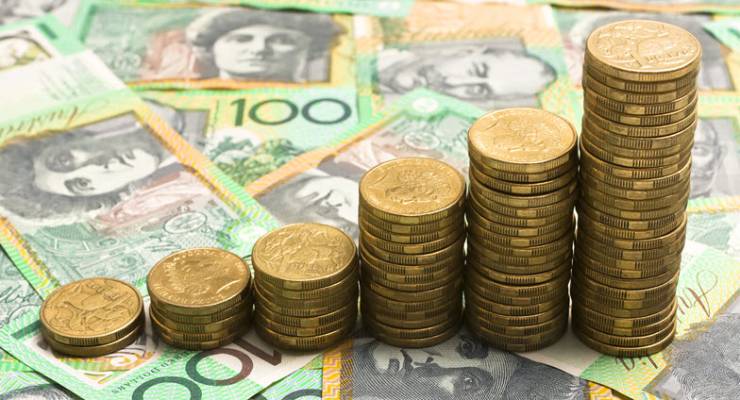
Inflation targeting is dead. Alack. We hardly knew ye.
The Australian Bureau of Statistics’ March-quarter consumer price index delivered one heck of a round number — 0%. That’s right. Inflation in Australia in the first three months of the year was totally static, in the latest signal that the Australian economy is stuck in a rut.
If the economy were booming, consumers were spending up big and companies were hiring avidly, we might expect inflation at up to 3% a year — around 0.7 to 0.8% each quarter. The shock inflation result for the start of 2019 fits neatly with a different picture: one of weak consumer spending and low economic growth.
The Reserve Bank of Australia targets inflation in a low and predictable range of 2-3%, on average across good times and bad. This target range is considered a vital input that, by making prices predictable, keeps the rest of the economy on track.
The importance of hitting the target
Inflation targeting was invented in the ’90s and adopted by Australia shortly thereafter and can take substantial credit for the steady growth and low inflation we have experienced since.
As Australia moved to inflation targeting in 1992, then-RBA governor Bernie Fraser said an inflation target between 2 and 3% “would be unlikely to materially affect business and consumer decisions, and it would avoid the unnecessary costs entailed in pursuing a lower rate.”
He has been proven right and the target is now formalised in a regular statement on the conduct of monetary policy. The statement is an agreement between the government and the governor of the Reserve Bank to keep inflation in the target range of 2-3%.
But since 2014, this agreement has been breached. Australian annual inflation has averaged just 1.6%. Reserve Bank Governor Philip Lowe took over the reins in September 2016. His tenure has been characterised by the RBA failing to do what it is supposed to: keep inflation in the target range, on average. (If this is a case of “nominative determinism”, perhaps the RBA needs to swap Lowe for a new governor named Highe).
The RBA annual inflation rate is shown in the next graph. In recent years it has been out of the target range on all but two occasions.

Chat about low inflation has provided a background hum for the last several years, even as the RBA left the interest rate on hold at 1.5%. The latest inflation result turns that hum into a roar and is likely to be enough to make the RBA act.
Interest rate futures reflect a strong chance of cuts. Market pricing implies a roughly 50% chance of official interest rates falling to 1.25% at the May Reserve Bank board meeting; a 90% chance of a cut by June; and, by February next year, it implies at least two cuts, as depicted in the next graph. The height of the bars in the chart is the average expectation of the level of the official interest rate at each point in time.

Of course, the RBA could deliver a single, super-sized cut of 50 basis points all at once, and bring official interest rates down to 1%. Monetary policy is arguably less effective at these low levels, and so a bigger cut might be required to have any measurable effect on the economy.
Eyes off Martin Place
Whenever inflation is too high or low, focus lands on the Reserve Bank of Australia. But it is not the only economic manager in the country. Indeed, as the current election campaign reminds us, the elected government claims a great deal of responsibility for economic management.
We are supposed to believe that keeping the budget in balance is the foremost responsibility of a treasurer. This idea has been in vogue since the years in which Peter Costello occupied the treasurer’s suite. But the cart is in front of the horse. Costello paid down debt because he could. Indeed, he could come up with little else to do with the unexpectedly gushing revenue Australia enjoyed at the time.
Having paid down the debt, the government made a great virtue of fiscal prudence. The centrality of budget management to the treasurer’s role has been accepted wisdom in Australia ever since. But a Keynesian approach to budget management would say that running a tight budget when underemployment is high and inflation is languishing is utterly counter-productive.
Indeed, Labor went to an election in 1961 promising to run a deficit to improve unemployment, as University of Melbourne academic Warwick Smith outlines in The Conversation.
For the RBA to achieve its goal of getting inflation back in the target range, it can’t be the only one working on the problem. With official interest rates almost at zero and the budget nearly back in surplus, it is arguably fiscal policy that has more firepower left. Whoever becomes treasurer after May 18, they should consider remedying weak inflation to be part of their job.








We are about to get a Labor government, so we can expect the substantial deficits of which you seem to be implying we have the need. This will lead to an increase in inflation and consequently, wages. Problem solved. Or a new beginning? Cheers, M
Sorry mate but that is Bullshit. The most recent sudden increase in inflation was due to the stupidity of John Howard who cut taxes in a boom. The concept that the Liberals manage the economy better is rubbish. Everyone says Howard. Well yes he achieved surpluses on the back of a once in a lifetime mining boom, invented by China not the Liberals, and selling everything he could find. They did almost nothing with the revenue and then made sure that any attempt to collect a fair share was snuffed out. They also completely neglected future planning.
Would this be like the continual deficits and accumulated doubling of debt the COALition has given us ? At least Labor will direct some largesse to those who need it rather than wealthy retirees, cash choked private schools and property speculators.
Also Jason I seem to remember some pretty large privatisations during the Costello years.
“But a Keynesian approach to budget management would say that running a tight budget when underemployment is high and inflation is languishing is utterly counter-productive.”
Hurrah! Somebody has seen that budget surpluses (or even attempts at delivering them) can be BAD. Now, why don’t other people figure this out? The government is not like a household.
So if inflation is at 0% why is my cost of living steadily increasing? I buy mostly the same food and grocery items, have tried to cut back on the amount of electricity and water used and when I use the car try to do everything necessary in one trip to save on petrol. What are the measuring in the inflation index, because it surely does not seem to reflect the reality of my acquaintances and friends?
This is also about the lack of wages growth for which the LNP is responsible. Interest rates of 1% are disastrous. NO one can make money lending at this rate, so the fees go up and stay up. Fixed income people are pinched again and the cheap money is misapplied by rent seekers and crooks. The only cure is higher wages surely.
A smart move would be to go into deficit with carefully crafted one off payments to people who would spend the money in the local economy.
A dumb move would be tax cuts to high net worth people and high wage earners who if they spend it at all, would be on upgrading their Swiss chalets or funnelling it into Cayman Island bank accounts.